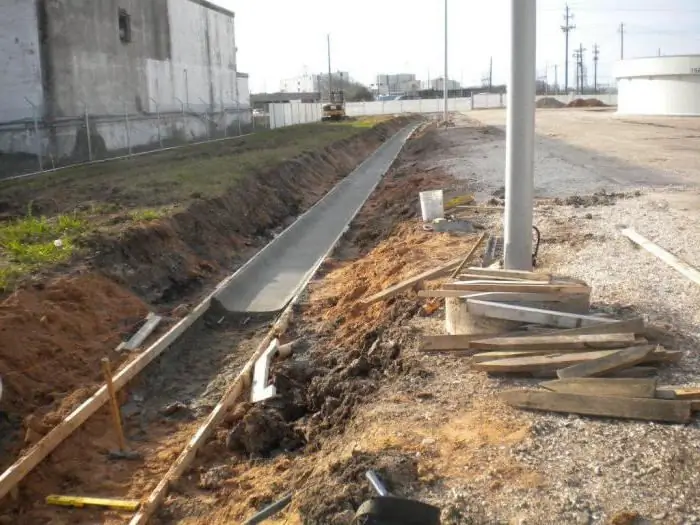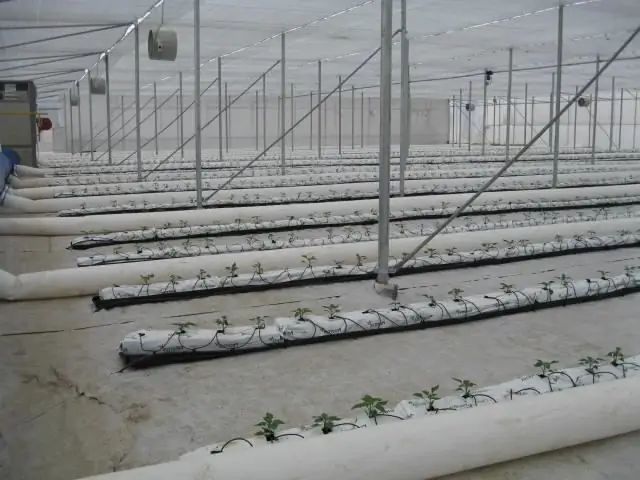2025 Author: Howard Calhoun | [email protected]. Last modified: 2025-01-24 13:10:29
"Kasaflex" is today a generalized name for pipeline systems, as well as other components required for non-sewer trench laying of heat and hot water supply lines with an industrial transportable temperature of 150 degrees and a pressure of 25 atmospheres. In practice, the Casaflex pipe withstands a short-term increase in temperature by an order of magnitude higher.
Casaflex: constituent elements
The Casaflex system consists of the following elements:
- pressure pipe corrugated, steel;
- high quality thermal insulation layer made of safe polyurethane foam;
- remote control system consisting of a signal cable (ODK);
- polyethylene waterproofing shell.

Many gasket options allow flexibilityCasaflex (pipes). The description of the already laid main pipelines makes it possible to install new systems without violating the integrity of the old ones and choosing the most optimal routes. If there is an obstacle in the conditions of a shortage of urban development area, the Casaflex pipe easily bypasses it. There is no need to use starting compensators, sliding supports. The cost and time frame of work during the installation of the highway are reduced several times, since there is no need to combine a flexible pipe and steel in PPU insulation.
Description of the Casaflex pipe
- Specifications allow the use of media with a pressure of 25 atmospheres and a temperature of 150 degrees in the system.
- The insulation material contains foamed polyisocyanurate foam with high thermal protection.
- Surface corrugated layer covered with LDPE-polyethylene sheath with identification marking strips.
- There are integrated wires inside the thermal protection layer, connected to the JEC system.
Characteristic and variety of pipes
The Casaflex pipe is supplied in coils with a length of 120 to 250 m, a meter weight of 2.46 to 7.40 kg with a bending radius of 1 to 2 meters. Depending on the diameter of the pressure pipe, Casaflex is divided into types:
- 55/110 - with pipe diameter 55x0, 5/48 mm;
- 55/125 Plus - with pipe diameter 55x0, 5/48;
- 66/125 - with pipe diameter 66×0.5/60;
- 66/140 Plus - with pipe diameter 66×0.5/60;
- 86/140 - with pipe diameter 86×0.6/75;
- 86/160 Plus - with pipe diameter 86×0.6/75;
- 109/160 - with pipe diameter 109×0.8/98;
- 143/200 - with pipe diameter 143×0.9/127.

Line installation
According to experts, repair and maintenance costs are reduced by 3 times if the Casaflex pipe is used. Installation of the system allows to reduce the volume of land works by 5 times and its cost by 8 times. Five-fold savings on the cost of landscaping. The figures justify the popularity of the use of these systems in Russia and the CIS countries.

Installation speed compared to metal standard pipes allows to reduce system installation time by 5-8 times. Pipes are attached to each other by means of fittings.
Step-by-step installation of the Casaflex system
- Diametrically cut the insulation layer 20 cm from the end of the tube without damaging the signal inner cable.
- Cut the insulating layer with a knife and remove it from the polyethylene.
- Bend the wires and remove the polyurethane foam layer, clean the surface.
- Cut the pipe according to its diameter, file the edges of the pipe.
- Tighten the flange to the end of the insulation.
- Without using the supplied ring, push the body of the fitting all the way.
- Scrolling the flange, set the gap between it and the fitting to half a millimeter.
- Remove the fitting, put on the ring.
- Put the fitting back on, tighten the retaining bolts.
- Put onon the wires of the signal cable heat-shrinkable tubes, process with a soldering iron.
- Wrap the fitting with mastic tape.
- Put on the clutch, process with a soldering iron.

Maximum simplicity allows you to assemble the most complex systems with a laying speed of up to 600 meters daily by a team of 4 people. Consumers are switched off for no more than 3 hours during the installation of the Casaflex pipe. There is no need to turn off the power supply. Pipe installation can be carried out in all weather conditions, even in winter.
Advantages and disadvantages of the Casaflex pipe
Benefits:
- Minimum heat loss during transportation of coolant.
- The Casaflex pipe is not subject to wear, corrosion, and is durable.
- Waterproofing is not required, as a result, the cost of the main system is reduced.
- The shape of the pipe is in the form of corrugations, which simplifies the laying of the system, overcoming obstacles, there is no need for compensators and additional supports.
- Possibility of channelless laying.
With all the advantages, the Casaflex pipe has disadvantages:
- high UV sensitivity and low fire resistance;
- high cost of the Casaflex pipe;
- pipe installation requires hydraulic press, torch and other accessories;
- to prevent rupture of the shell, it is necessary to install the system on a sand cushion;
- PE outer film is easily damaged;
- during long-term storage of pipes, it is necessary to create special conditions for protection from sunlight;
- The system must be installed by skilled workers.

With these shortcomings, Casaflex pipes are successfully used in world projects of increased complexity. The laying of heating mains using these systems was carried out at railway stations, in the subway, in reservoirs and mountains. Wherever rigid piping is not possible or practical.
Today, global companies use this high-tech product, laying engineering paths not only efficiently and quickly, but also saving energy resources within the entire state.
Recommended:
Tray for heating mains: dimensions, GOST. Reinforced concrete trays for heating mains

Reinforced Concrete Heating Tray is rectangular in shape and has a gutter configuration. The parameters for the type of width, length and height of different models differ from each other. The structures are made of heavy concrete, which, after hardening, are extremely resistant to various types of loads. In addition, these trays are frost-resistant
Greenhouse heating: heating methods

In spring and summer, thanks to the natural conditions in the greenhouse, you can grow different crops without additional heat. And in autumn, winter and early spring, when both the soil and the air are cold, it is very difficult to grow something in a greenhouse. This is why greenhouse heating is necessary
Heating oil as an alternative to traditional heating

Heating oil has become the most demanded resource for heat production. It is not advisable to use gas and electricity as space heating and water. Moreover, when burned, heating oil releases much more energy than diesel fuel, making it the most suitable energy source for home heating
Production of flat heating elements. Do-it-yourself heating flat element

The heating flat element is a heating element made of plates of different materials. They are made from a specific shape, each of which serves to heat flat parts. A flat heating element in its design resembles a rubber wire attached to a special housing. It can be made of metal, ceramic or micanite. This device operates on a simple 220 V mains supply
PVC sewer pipe 110 mm for the installation of individual systems

When creating communication networks for draining, it is allowed to use conductive elements made of various materials. However, the 110 mm PVC sewer pipe is very popular, as it is ideal for the installation of individual systems

